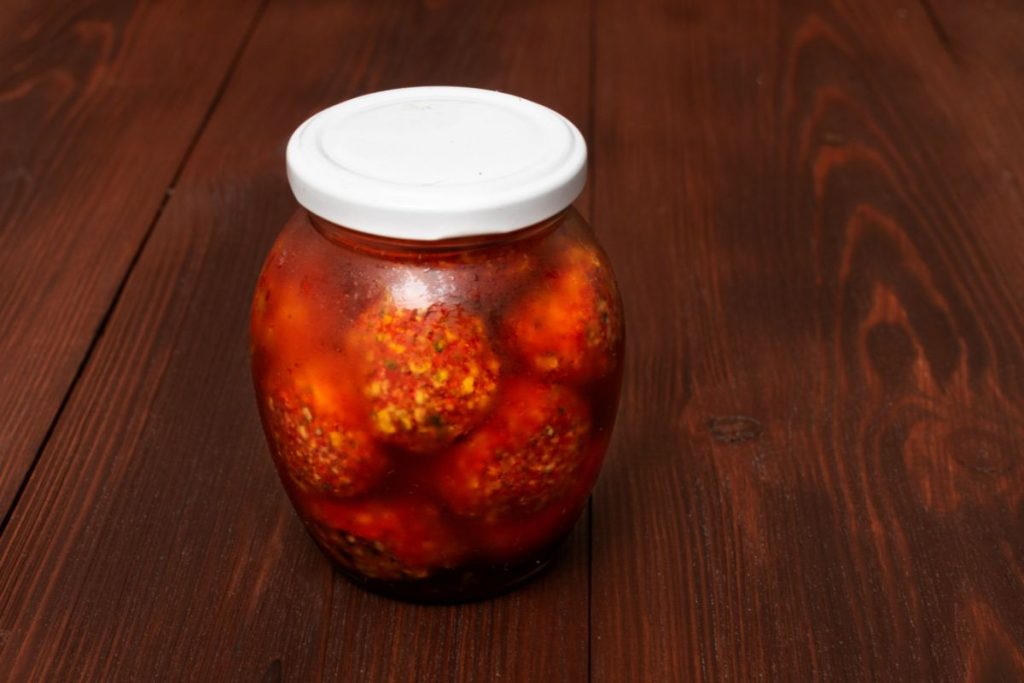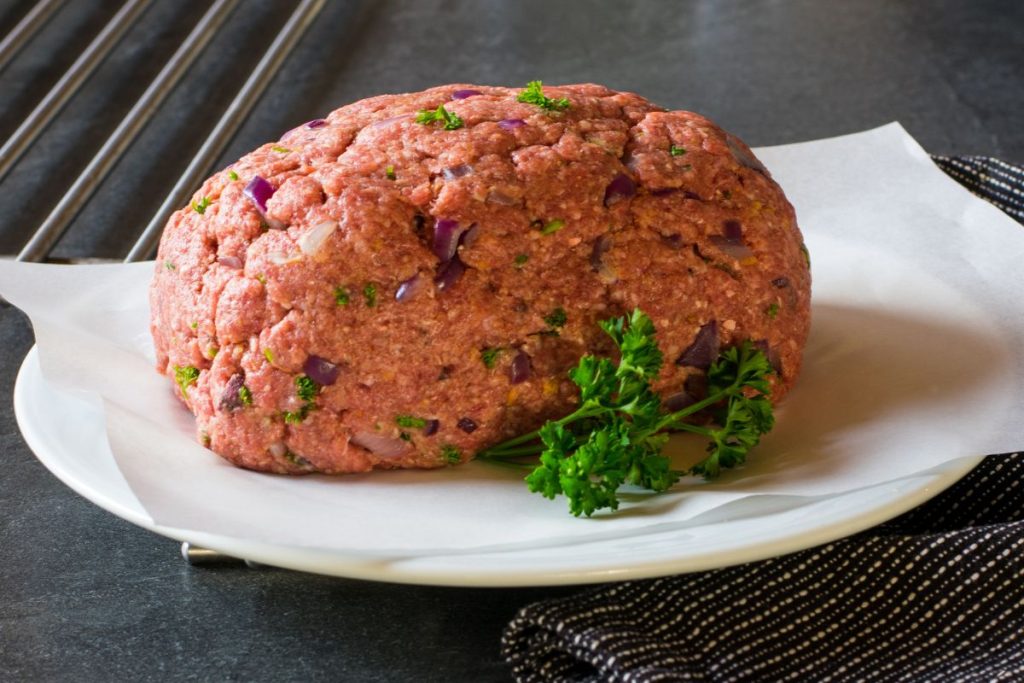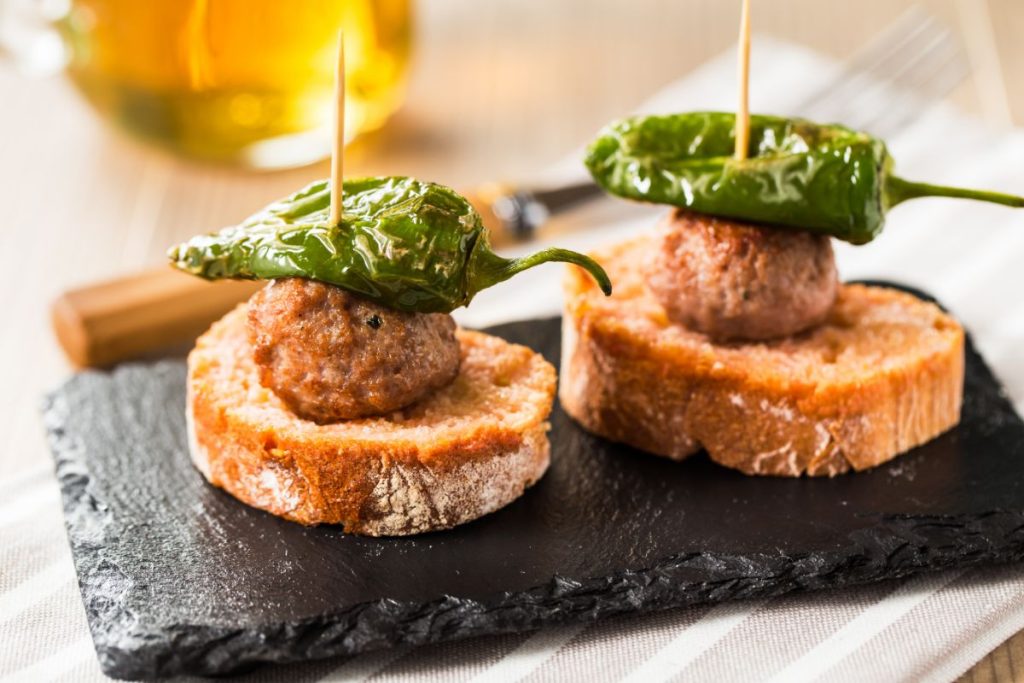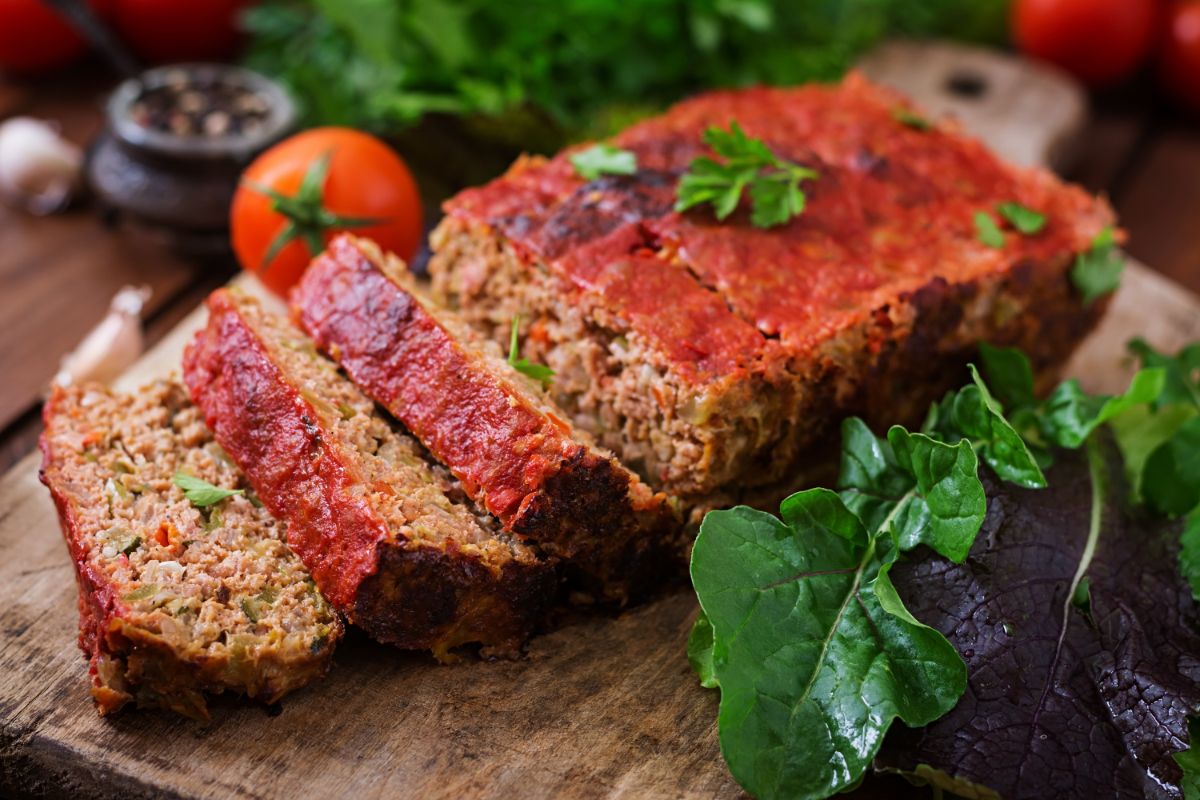To pressure can meatloaf, form small loaves of the ground meat mixture and oven-bake them for 30 minutes at 375°F. Transfer the meatloaf pieces to hot canning jars, and cover with canning liquid, leaving 1-inch headspace. Process in a pressure canner for 75-90 minutes.
What is the Best Way to Safely Can Meatloaf?
Per the USDA, pressure canning is the best way to safely can meatloaf. Pressure canning meatloaf ensures that low-acid foods reach 240°F, which is the temperature required to destroy the bacteria that causes botulism. It is not safe to process meatloaf in a boiling water bath canner.
Canning Meatloaf in a Pressure Canner
To safely can meatloaf, make sure to follow the National Center for Home Food Preservation guidelines for canning meat.
Here’s a step-by-step guide on how to can meatloaf in a pressure canner:
- Start by washing wide-mouth canning jars, lids, and screw bands in hot, soapy water, and rinse well under running water.
- Sterilize the canning jars by placing them in boiling water for 10 minutes.
- Prepare the meatloaf mixture according to your meatloaf recipe. You may add spices such as black pepper, garlic powder, brown sugar, or salt. Limit the number of breadcrumbs, and do not add eggs.
- Form the meat mixture into small meatballs or meatloaf patties that will fit into the canning jars.
- Preheat the oven and bake the meatloaf pieces for 30 minutes at a temperature of 375°F.
- Combine water, vinegar, pickling salt, sugar, onion flakes, and garlic flakes in a saucepan to form the canning liquid. Bring the liquid to a simmer over medium heat for 10–15 minutes. You may also use hot tomato juice or beef broth if preferred.
- Prepare the pressure canner and fit the canning rack into the canner, following the manufacturer’s guidelines.
- Fill the pressure canner with 2–4 inches of water, per the manufacturer’s directions.
- Place the meat pieces into clean, sterilized canning jars, allowing 1-inch headspace in each jar.
- Ladle the canning liquid over the meatloaf, maintaining the 1-inch headspace on top of the jars.
- Eliminate air bubbles with a sanitized bubble popper.
- Dampen a paper towel with vinegar and wipe the rims of the jars to ensure a proper seal.
- Screw the lids and rings on the jars, tightening the rings until they are fingertip-tight.
- Allow the pressure canner to heat up on the stove. Place the jars on the canning rack with a jar lifter, leaving 1 inch of space between them.
- Close the lid of the canner and allow the canner to vent steam for 10 minutes.
- Allow the canner to build to the recommended pressure per your canner type and the elevation below:
Processing pressure and time for meatloaf in dial-gauge canners.
| Altitude (ft) | 0 – 2,000 | 2,001 – 4,000 | 4,001 – 6,000 | 6,001 – 8,000 |
| Pints (75 mins) | 11 lbs | 12 lbs | 13 lbs | 14 lbs |
| Quarts (90 mins) | 11 lbs | 12 lbs | 13 lbs | 14 lbs |
Processing pressure and time for meatloaf in weighted-gauge canners.
| Altitude (ft) | 0 – 1,000 | 1,001 + |
| Pints (75 mins) | 10 lbs | 15 lbs |
| Quarts (90 mins) | 10 lbs | 15 lbs |
- Process pints for 75 minutes and quarts for 90 minutes.
- Once the processing time is over, turn off the heat and let the pressure canner cool down naturally. Do not open the lid until the pressure reaches zero.
- Use a jar lifter to carefully remove the jars from the canner. Place the jars on a cushioned surface, and allow them to sit undisturbed for 12–24 hours at room temperature.
- Remove the screw bands and check if the lids are properly sealed. They should be firm and not move up and down when the center of the lid is pressed. For any unsealed jars, refrigerate and use the contents within 2 days.
- Label and store sealed jars of meatloaf in a cool, dry place.

Can You Raw Pack Meatloaf?
It is not recommended to raw-pack meatloaf. Meatloaf is made from different forms of ground meat, which may include ground beef and pork. The National Center for Home Food Preservation recommends against raw packing ground meat because clumps may form, which causes improper heat penetration and increases the risks of botulism.

Do You Have to Fully Cook Meatloaf Before Canning?
No, the meatloaf doesn’t have to be fully cooked before canning. Meatloaf should be partially cooked for 30 minutes in a loaf pan or roasting pan in an oven at 375°F.
How Long Does it Take to Can Meatloaf?
It takes 75-90 minutes to can meatloaf, not including precooking or cooling. Quart jars require 90 minutes, while pint jars require 75 minutes of processing time.
What are the Benefits of Canning Meatloaf?
The following are the advantages of canning meat:
- Convenience: Avoid excessive trips to the grocery store; just heat and serve canned meatloaf!
- Cost-effective: Buy meat in bulk to save money and can the meatloaf for future use.
- Long-term storage: Canned meatloaf has a shelf life of 2-3 years.
- Retain nutrients: Canning meatloaf preserves its nutritional value without artificial preservatives.
- Versatility: DIY canned meatloaf can be used in sandwiches, casseroles, and as a main course!

Tips for Sealing Jars of Canned Meatloaf
Here are some tips to ensure proper sealing when home canning meatloaf:
- After processing, don’t touch the jars until they are completely cool
- Always follow the time and pressure recommendations when canning
- Avoid excessive tightening of canning rings – it prevents air from escaping
- Avoid reusing lids or using non-canning lids
- Leave the recommended headspace to allow for liquid expansion
- Use wide-mouth jars for canning meat
- Wipe the rims of the jars with a clean, damp cloth to remove residue
How Long Does Canned Meatloaf Last?
Canned meatloaf lasts for 2–3 years. Keep the canned meatloaf in a cool, dry place, such as a cupboard or the kitchen pantry, away from direct sunlight.
Label the storage containers with the canning date and rotate your stock regularly. Use the oldest stock first to avoid food waste.

